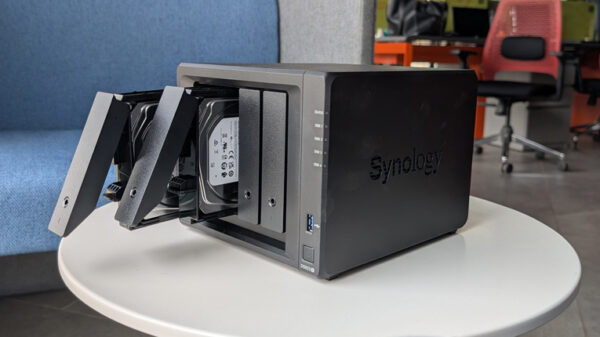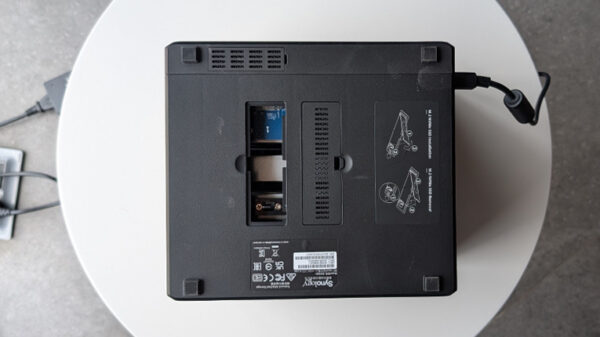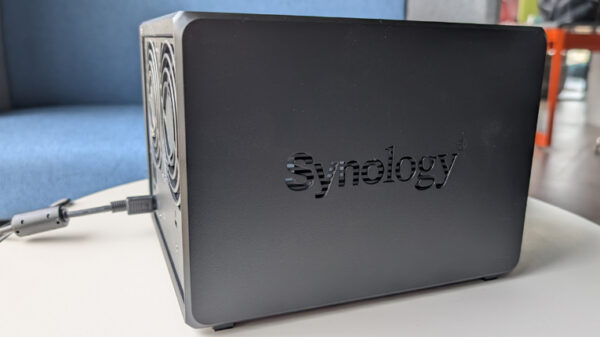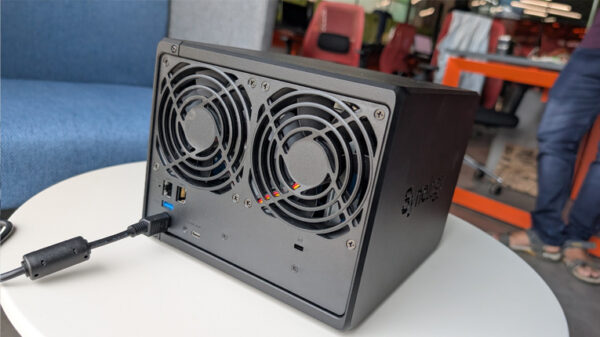Verdict
The Synology DS925+ is a compact powerhouse that delivers on performance, flexibility, and ease of use. It’s ideal for small and medium businesses and enthusiasts who want more control over their data without relying on the cloud. The upgraded networking, refined processor, and DSM ecosystem make it a worthy successor to the DS923+. However, the mandatory use of Synology-branded drives for new installs is a tough pill to swallow. For new users building a NAS from scratch, the added storage cost could be significant. But for those already in the Synology ecosystem, especially those migrating from an older unit, the DS925+ feels like a natural and valuable upgrade.
The Good
- Strong performance boost
- Expandable and flexible storage
- Strong software
The Bad
- Locked to Synology-branded drives
-
Design
-
Features
-
Performance
The Synology DiskStation DS925+ is the latest iteration of Synology’s compact, high-performance NAS lineup, targeting power users, small businesses, and prosumers who demand flexibility, speed, and reliability in their data storage solutions.
With a design that’s familiar yet subtly refined, a boost in processing power, and an evolving approach to storage compatibility, the DS925+ is a capable upgrade, but not without a few trade-offs.
Let’s explore its strengths and sticking points in detail.
Design

At a glance, the DS925+ doesn’t stray far from its predecessor, the DS923+. Measuring 166 x 199 x 223 mm and weighing 2.25 kg, it maintains a compact footprint ideal for desks, server shelves, or discreet corners in a home office.
The front houses four hot-swappable bays, with status indicators and a USB 3.2 port, while the back sports the rest of its I/O and twin fans for active cooling.
One visible change is the replacement of the older eSATA port with a USB-C expansion port.
While this isn’t a universal USB-C port (you can’t use it to plug in SSDs or charge a device), it supports Synology’s expansion units, letting you grow the DS925+ to a 9-bay setup via the DX525.
Read More: Synology BeeStation Review: A Personal Cloud That Just Works
We would have loved to see broader USB-C utility, but the port is meant specifically for the expansion unit to ensure stability.
Connectivity has also improved.
The DS925+ now includes dual 2.5GbE Ethernet ports, up from 1GbE in the previous model.
These ports can be configured for failover or link aggregation, offering a notable bump in throughput for users with compatible network infrastructure.
Features

The DS925+ keeps the beloved aspects of Synology’s ecosystem intact while making strategic internal improvements.
Chief among them is the AMD Ryzen V1500B quad-core processor, offering 8 threads and lower power consumption than the previous-gen Ryzen R1600.
It’s more efficient (16W vs 25W TDP), and its doubled L2 cache and PCIe bandwidth translate to smoother multitasking and better performance for cache-heavy tasks.
The NAS ships with 4GB of DDR4 RAM in a single SODIMM slot, which can be expanded to 32GB across two slots.
That said, it would have been nice to see 8GB pre-installed as a single module, given this NAS’s premium positioning.
Storage-wise, the DS925+ offers four SATA bays for HDDs or SSDs, and two M.2 NVMe SSD slots for read/write cache.

These can’t be used for storage pools directly, which is a known limitation of Synology’s architecture.
However, if you’re planning to use NVMe caching, note that Synology now requires proprietary Synology-branded NVMe drives, a move that adds costs and restricts choice.
And that leads to the most controversial change: the storage compatibility policy.
For fresh installs, you’ll now need Synology-branded drives to set up your storage pool.
Existing drives can be reused only through a drive migration from another Synology NAS, not from scratch.
While this standardises performance and support, it also raises the barrier to entry, especially for home users who prefer using more affordable drives.
Performance

The DS925+ is more than just a storage box; it’s a mini server in its own right.
Synology claims up to 522 MB/s read and 565 MB/s write speeds, and in real-world testing, it shows measurable improvements over the DS923+, especially in write-heavy tasks.
Whether you’re moving large volumes of media, backing up multiple machines, or spinning up containers, the system feels snappy and responsive.
Combined with NVMe caching (assuming you’re using Synology’s supported SSDs), this unit becomes a very competent all-in-one server for your office or studio.
However, fan noise is noticeable under heavy load.
It’s nothing obnoxious, but something to consider if it’s placed in a quiet room.


